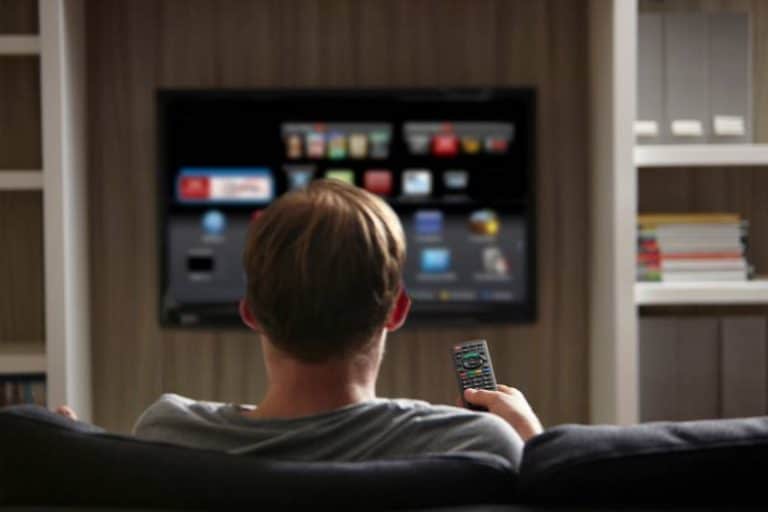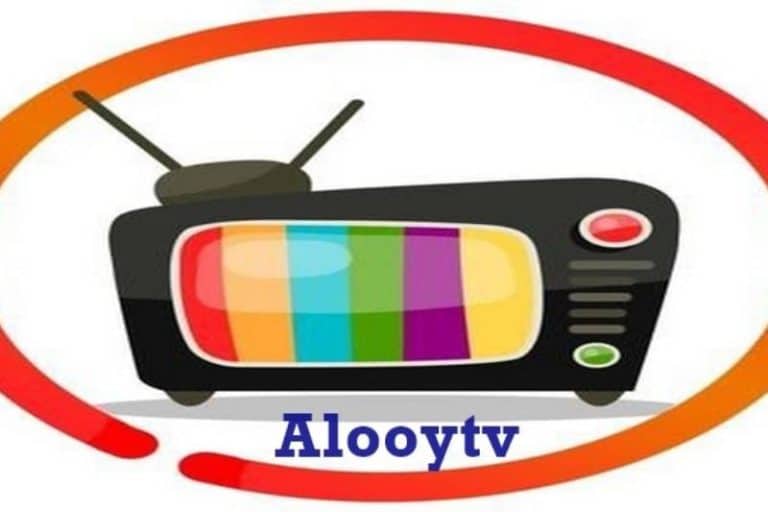Why TV Advertising Works: A Comprehensive Guide

The world’s first TV advertising was broadcast about 80 years ago-since then, TV has gradually become the world’s most important advertising medium. Even in the era of changing media habits and digital media oligarchs, TV still maintains a huge brand power. The reason is simple: significant brand effect and halo effect. It can bring both short-term direct users and long-term brand building goals. It can also increase the conversion rate of the advertiser’s online campaign, DAU, and even the internal payment rate of the app.
SCALE OF TV ADVERTISING
The scale of any advertising medium is a key factor in determining its effectiveness. ‘Scale’ can be defined as the ability to reach a large audience in a short period of time. Since the advent of digital TV, TV program channels have increased rapidly, including channels known to women and children as well as niche special channels. This means that there are only a handful of people who do not watch TV programs; it can be said responsibly that the scale of TV programs is very large.
Streaming media that provides consumer video content may give you the illusion that TV programs may die. But in fact, TV shows are still huge and still the most popular form of video. TV shows account for almost 80% of ordinary people’s daily video consumption-in contrast, YouTube only accounts for 6%, and subscription video on demand (SVOD) only accounts for 4%.
‘Scale’ can also have another definition, that is, the size of the TV itself. In ordinary homes, the TV is the largest and loudest media device. The desktop computers placed in the corners and in the study have moderate-sized displays. According to their characteristics, laptops and tablets are equipped with smaller screens, while the screens of mobile devices are negligibly small. In fact, apart from outdoor billboards and movie placement advertisements (not comparable), you will never find a larger advertisement than on a TV screen.
More importantly, as TV manufacturing technology tends to be cheap and popular, TV owners continue to rise, and the average screen size is also getting larger. Therefore, with consumers paying for their own pockets, the influence of TV advertising continues to increase.
However, as a medium, the real importance of the large scale of TV is that it can bring a large audience at the same time; at this point, there is nothing but TV.
INFLUENCE
The scale of TV naturally means that it can reach a large audience. It is a medium that is popular with all kinds of people, and its specialty is to reach the most audiences in a short period of time. This is an unparalleled advantage and one of the major advantages of advertising on TV shows.
According to the statistics of the British Audience Research Institute (BARB) from January to June 2016, British people watch TV shows for an average of 1.5 hours a day. Despite the rise of customized services and set-top boxes, 86% of viewers still watch live broadcasts. This means that each British viewer will watch an average of 45 advertisements per day, which is 6 more than a decade ago.
Facts speak louder than words. 400 GRPs (the standard buy-in currency for TV videos and TV commercials) of general TV commercials have been broadcast 237 million times in the UK. Commercial TV programs affect 70% of the British population daily, 90% weekly and 98% monthly (BARB 2016), making other media unmatched.
This is the extraordinary influence that live broadcasts are born with. TV programs of major events (Super Bowl, Olympics or political debates) that are of great public interest can attract the largest and widest audiences. Advertisements surrounding these activities can simultaneously deliver a message to a broad audience—with the aid of synchronization—bringing additional benefits, and the pursuit of excellence also promotes the generation of TV halo effects.
TYPES OF TV COMMERCIALS: UNIQUE CREATIVITY
So why is TV advertising so outstanding? Simply put, it is just the characteristics of the medium. Playing an advertisement on the big screen in the middle of the family living space will immediately attract attention, while still leaving a huge creative space to convey an influential message.
In addition, TV commercials are also broadcast in a way away from noise. The web page and the printed page can present several different advertisements at the same time—it is also in a state of competition with the content itself. TV advertising benefits from dedicated space and audiences.
With proper arrangements, TV commercials can complement the previous and subsequent programs. And as more similar and even more creative content emerges-audiences will be more engaged and more likely to be fully engaged.
The creative scale of TV shows also contributes to achieving excellence. Video on the big screen provides enough space for narrative and sensationalism. If handled properly, it will have a far greater impact than any other form of advertising. Digital Cinema Media (DCM) explains how movie advertisements are “effectively processed by the brain” and “more effective and more appealing” according to the size of the screen and the focus of the audience.
TV shows bring the same advantages to a broad audience. TV shows are an important part of daily life and the foundation for building a big brand. The International Accreditation Association (IPA) contact point confirmed that the probability of an average person going to the cinema on media day is 0.4%, while the probability of watching TV shows is 48% (Linsey Clay, CEO of Thinkbox). Therefore, when considering any media planning, it is important to remember that television is still the most effective and practical medium to achieve the goal of “stand out.”
HALO EFFECT
If creating excellence is equivalent to turning on the light, then the halo effect is equivalent to the light it emits. Because TV has the ability to spread cultural influence: creating trust and reputation, the effect of TV advertising can run through the entire brand, not just limited to the single product or service advertised.
This is especially important for digital products, services or e-commerce. TV commercials can bring things that are visible and create a believable atmosphere; in this way, when an image comes out on the TV screen, it looks more “real”. Thanks to well-planned TV advertising campaigns, many brands quickly went from being unknown to everyone else. Once consumers recognize the brand, other forms of advertising will also benefit from it.
Adding TV advertising to your marketing will have a significant impact on the effectiveness of other channels. The two key factors of trust and reputation accumulated in TV advertising can help your marketing be more effective. Regardless of the combination of brand advertising and which channel, its efficiency is less than half of the advertising efficiency that uses a combination of TV and the Internet.
The halo effect of TV shows can cover the entire product collection of the brand, rather than a single marketing campaign. According to a report by Equiquity/Payback in April 2014, 37% of TV sales are felt by products that are not directly advertised on TV. A typical case that has achieved great success through the halo effect is Apple, which carried out a major marketing campaign during the launch of the iPod, and all its series of products have enjoyed continuous growth in sales: although it did not deliberately advertise computer sales. , The sales of this product skyrocketed for a while.
The halo effect is due in part to the compelling TV commercials that can stimulate conversations and word-of-mouth marketing—the holy grail of reliable information. TV advertising is still the most popular form of advertising. “If asked what kind of media to get advertising information from will make them willing to communicate face-to-face or on the phone, 58% of British people will answer TV. The next answer is the Internet, 10% of people” (Ipsos Media CT/Thinkbox ,’TV Nation’, 2014) Whether it becomes a chat topic in the office staff’s tea room or brings a new jingle to popular culture, the halo effect of advertisements will leave an impact that lasts for weeks, months, or even years… It will continue for a long time after the effect of the actual purchase of advertising ends.
TV ADVERTISING COSTS
TV advertising is not as expensive as many people think. After careful planning, TV advertising will be very cost-effective and cost similar to your online activities. We discuss it in another “TV Advertising Cost: A Comprehensive Guide.” In short, the complete guide, the most important point in depth is to handle it properly, every penny spent on TV advertising is worth it.
Once advertisers had only two or three channels to choose from, the cost was relatively high; now digital TV provides a large number of channels for advertising. An increase in supply will inevitably lead to a reduction in costs, but perhaps more importantly; it also opens up opportunities for different media buying strategies. Smaller media organizations can adopt last-minute purchases to obtain cheap inventory-even if the budget is limited; they can also speculate and obtain relevant opportunities.
Thanks to this smarter plan, cost efficiency is also improving. Targeting specific audiences can ensure that information only serves the right audience, thereby reducing waste of resources. TV advertising campaigns can then be optimized to focus on the most cost-effective advertising and minimize overexposure.
Therefore, in terms of return on investment, TV advertising can bring impressive results. This does not even include the promotion of other forms of advertising through the halo effect of television.
THE GOAL
Although it is generally believed that TV advertising campaigns can be clearly targeted. The advent of digital television has brought a large number of channels for viewers to choose from. Even a very small audience can be reached through TV programs, and there is little waste of resources; in addition, there is enough space to provide highly relevant and closely connected content.
Because of the large scale and impact of TV programs, TV commercials can reach everyone—regardless of the demographic structure. Men, women, young and old, poor and rich; all can be suitable media buyers. Subsequently, this made it possible for us to better understand the impact of advertising campaigns on specific groups-which in turn could provide information for future marketing efforts.
Similarly, the target audience can also be determined based on geographic location. Regardless of whether they are an entire country or region, or a specific region; there are many benefits to dividing targets by region. Switching regions in a TV commercial is a wise optimization measure to use the advantage of low cost to attract similar audiences.
A large variety of channels and programs can also provide a lot of space for careful media planning. Even if customers cannot be classified according to demographics, advertisers can still spread their voices. In addition, it allows the advertising material to deliver information with the appropriate content—comparable to the level of the program to which the advertisement is attached, and is increasingly prominent.
TV ADVERTISING EFFECTIVENESS
Television is as reliable as other media, but it is more difficult to evaluate. With the right tools, TV advertising reports can be accurately calculated. It is the principle by which we clearly understand how effective TV advertising is.
From the perspective of media organizations, careful measurement of advertising performance is not a great thing: but from the customer’s point of view, the most important thing is accurate results. Behind the scenes, the process becomes more and more complicated, and the insights of the machine learning attribution model are as expected by digital advertising—sometimes it goes too far. After all, few online advertisements can be broadcast to millions of viewers at a given time.
In addition to the impressive return on investment written in black and white, the progress in TV advertising analysis also allows people to perform more refined optimizations than ever before. The ability to continuously monitor and adjust TV advertising campaigns easily yielded impressive results.
In terms of brand building, TV advertising has long-term benefits for other media’s ability to create excellent and halo effects. At present, many mainstream data monitoring companies, such as Appsflier, Nielsen, and even Facebook, can provide TV advertising with an influence on advertisers’ online campaigns. Report, which allows advertisers to see the return on investment of TV advertising more clearly.
TV Advertising Basics – What You Need To Know
CONCLUSION
You have learned some of the fundamental reasons why TV advertising is still the most effective medium for advertisers. This is very suitable for delivering marketing messages to a broad audience, and you have proven your resilience in the face of huge technological changes. If television can withstand the digital revolution and subsequent changes in audience preferences, it is likely to remain standing in the next few decades.
For More Article Please visit www.lifestylebuz.com






